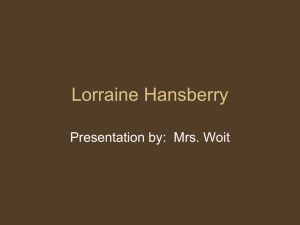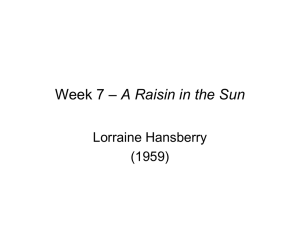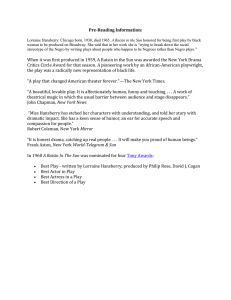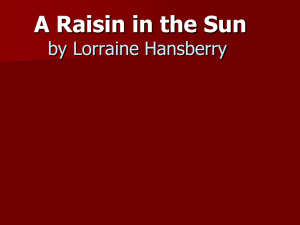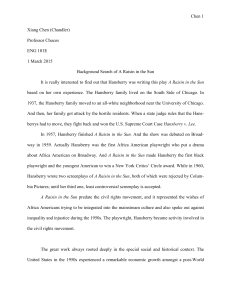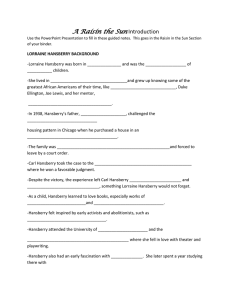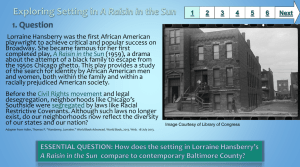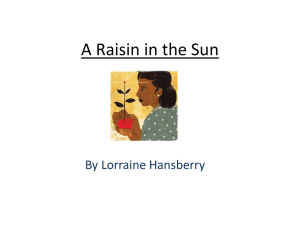Lorraine Hansberry,
advertisement
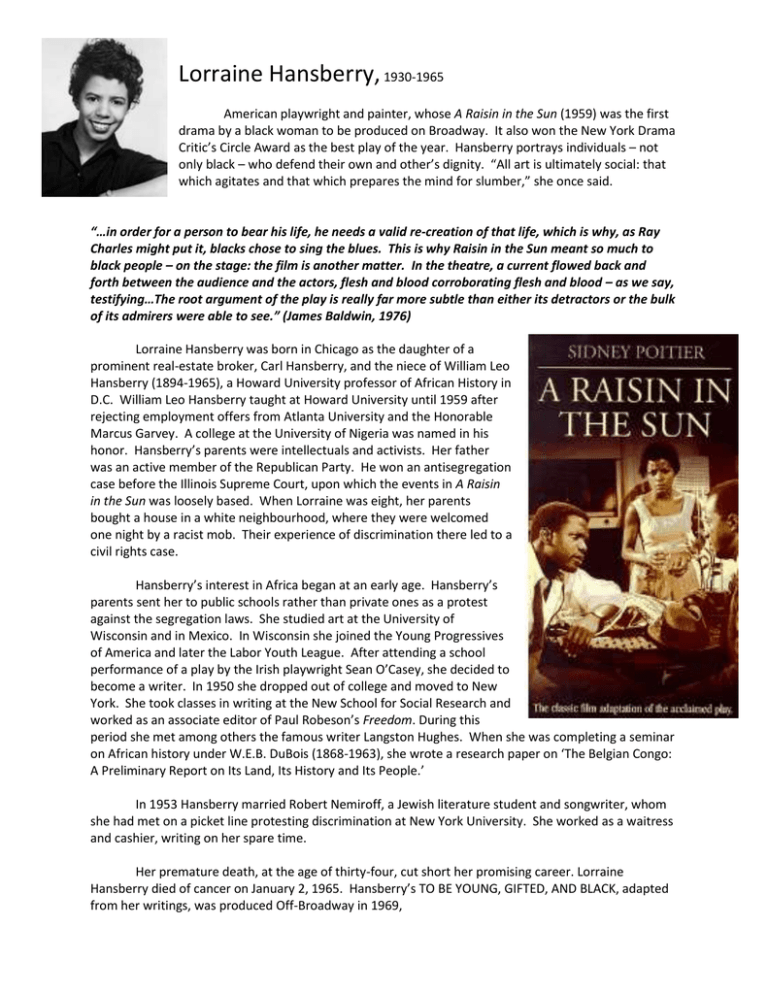
Lorraine Hansberry, 1930-1965 American playwright and painter, whose A Raisin in the Sun (1959) was the first drama by a black woman to be produced on Broadway. It also won the New York Drama Critic’s Circle Award as the best play of the year. Hansberry portrays individuals – not only black – who defend their own and other’s dignity. “All art is ultimately social: that which agitates and that which prepares the mind for slumber,” she once said. “…in order for a person to bear his life, he needs a valid re-creation of that life, which is why, as Ray Charles might put it, blacks chose to sing the blues. This is why Raisin in the Sun meant so much to black people – on the stage: the film is another matter. In the theatre, a current flowed back and forth between the audience and the actors, flesh and blood corroborating flesh and blood – as we say, testifying…The root argument of the play is really far more subtle than either its detractors or the bulk of its admirers were able to see.” (James Baldwin, 1976) Lorraine Hansberry was born in Chicago as the daughter of a prominent real-estate broker, Carl Hansberry, and the niece of William Leo Hansberry (1894-1965), a Howard University professor of African History in D.C. William Leo Hansberry taught at Howard University until 1959 after rejecting employment offers from Atlanta University and the Honorable Marcus Garvey. A college at the University of Nigeria was named in his honor. Hansberry’s parents were intellectuals and activists. Her father was an active member of the Republican Party. He won an antisegregation case before the Illinois Supreme Court, upon which the events in A Raisin in the Sun was loosely based. When Lorraine was eight, her parents bought a house in a white neighbourhood, where they were welcomed one night by a racist mob. Their experience of discrimination there led to a civil rights case. Hansberry’s interest in Africa began at an early age. Hansberry’s parents sent her to public schools rather than private ones as a protest against the segregation laws. She studied art at the University of Wisconsin and in Mexico. In Wisconsin she joined the Young Progressives of America and later the Labor Youth League. After attending a school performance of a play by the Irish playwright Sean O’Casey, she decided to become a writer. In 1950 she dropped out of college and moved to New York. She took classes in writing at the New School for Social Research and worked as an associate editor of Paul Robeson’s Freedom. During this period she met among others the famous writer Langston Hughes. When she was completing a seminar on African history under W.E.B. DuBois (1868-1963), she wrote a research paper on ‘The Belgian Congo: A Preliminary Report on Its Land, Its History and Its People.’ In 1953 Hansberry married Robert Nemiroff, a Jewish literature student and songwriter, whom she had met on a picket line protesting discrimination at New York University. She worked as a waitress and cashier, writing on her spare time. Her premature death, at the age of thirty-four, cut short her promising career. Lorraine Hansberry died of cancer on January 2, 1965. Hansberry’s TO BE YOUNG, GIFTED, AND BLACK, adapted from her writings, was produced Off-Broadway in 1969,
